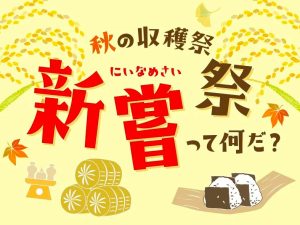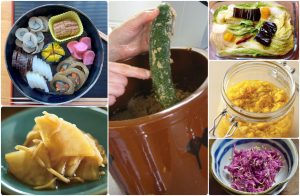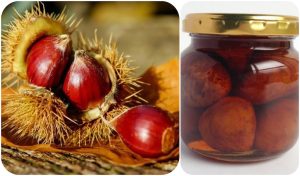Dear friends, colleagues and those who have expressed an interest in the FOOD & CULTURE of Japan:
Throughout the world, people set aside certain days to celebrate and offer thanks for a good harvest and/or hunt. The specific rituals practiced, and feasts served on these days of thanksgiving vary from culture to culture. Native American culture reveres corn, beans and squash (often referred to as The Three Sisters) while in Japan, it is the celebration of harvesting rice that holds symbolic and sacred significance. For all cultures, food is more than just sustenance.
Early records of NII NAMÉ SAI(harvest celebrations and wishes for future prosperity) can be found in Nihon Shoki (The Chronicles of Japan, 720 AD), the second-oldest book of classical Japanese history. Today, nii namé sai“thanksgiving” celebrations take place in Shrines throughout Japan on or about November 29th.
However, in 1948 a day of “thanksgiving” was designated as a Japanese national holiday: Kinrō Kansha no Hi.
Celebrating labor and production and thanking those around us for their daily efforts, the holiday is celebrated on November 23.
Visit PROJECT Kayaku Gohan for information on, and a recipe to make, this rice-cooked-with-vegetables dish that exemplifies thanksgiving — reverence for rice and gratitude for a plentiful harvest.
WASHOKU KITCHEN WISDOM
Check out the first installment of my series
for The Japanese Pantry, an online store dedicated to making the best quality artisanal Japanese ingredients available to cooks in the United States.
A Taste of Culture PROGRAMS
2-Session TSUKÉMONO Workshop: Fri December 6 (6:30-8:30pm) + Sat December 7 (10:30am – 4:00pm). Click photo for details and to register.
A Taste of Culture offers custom workshops for visitors and residents who wish to learn about Japanese home-style cooking and prepare it for themselves. Details here.
For on-going inspiration and instruction, visit my KITCHEN CULTURE archives and the coordinated Facebook Group kitchen projects at KITCHEN CULTURE COOKING CLUB.
Regardless of where you reside, I hope you remain interested in Japan and its food culture.
Turnip Flowers
Culinary art mimics nature: Decorative knife skills carve white turnips into chrysanthemums. A combination of salt-wilting and marinating in a sweet-and-sour brine flavors the turnips. Natural food dyes – gardenia pods and red shiso leaves – tint the turnip-flowers yellow and purple, respectively.
Sugar-Stewed Chestnuts
Shibu Kawa Ni, what the Japanese call sugar-stewed whole chestnuts, are only partially peeled – their slightly bitter, inner skin is kept intact. The resulting glossy brown globes are delightfully complex in flavor and texture.
WASHOKU ESSENTIALS bi-monthly column in the Japan Times. Most recently about KURI KINTON (chestnuts in sweet potato paste) andkuchinashi no mi (gardenia pods) that make the dish vibrant yellow.
Episode 341 (Sept 10) is about the language used to describe food textures … mouthfeel is often the most challenging element when trying new foods.
Prefer video-based learning? Join me on CRAFTSY











Comments